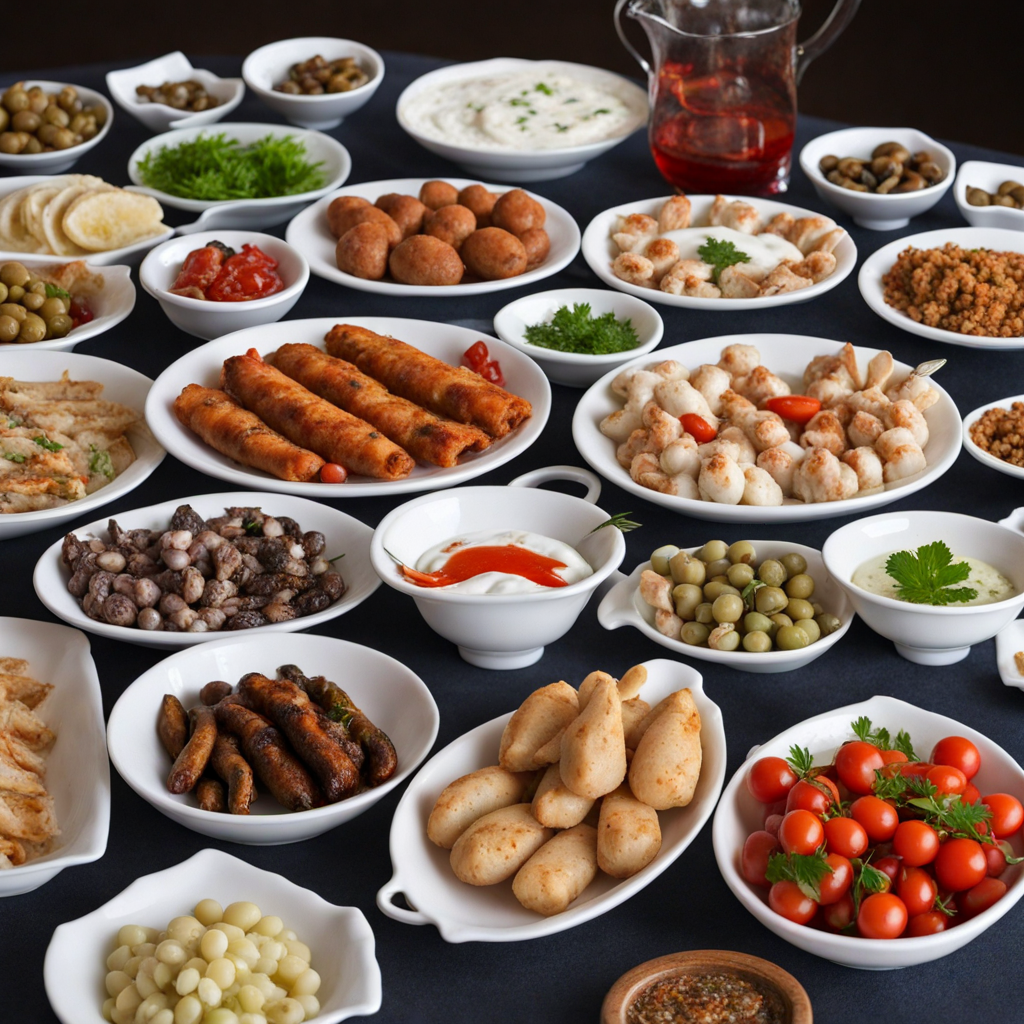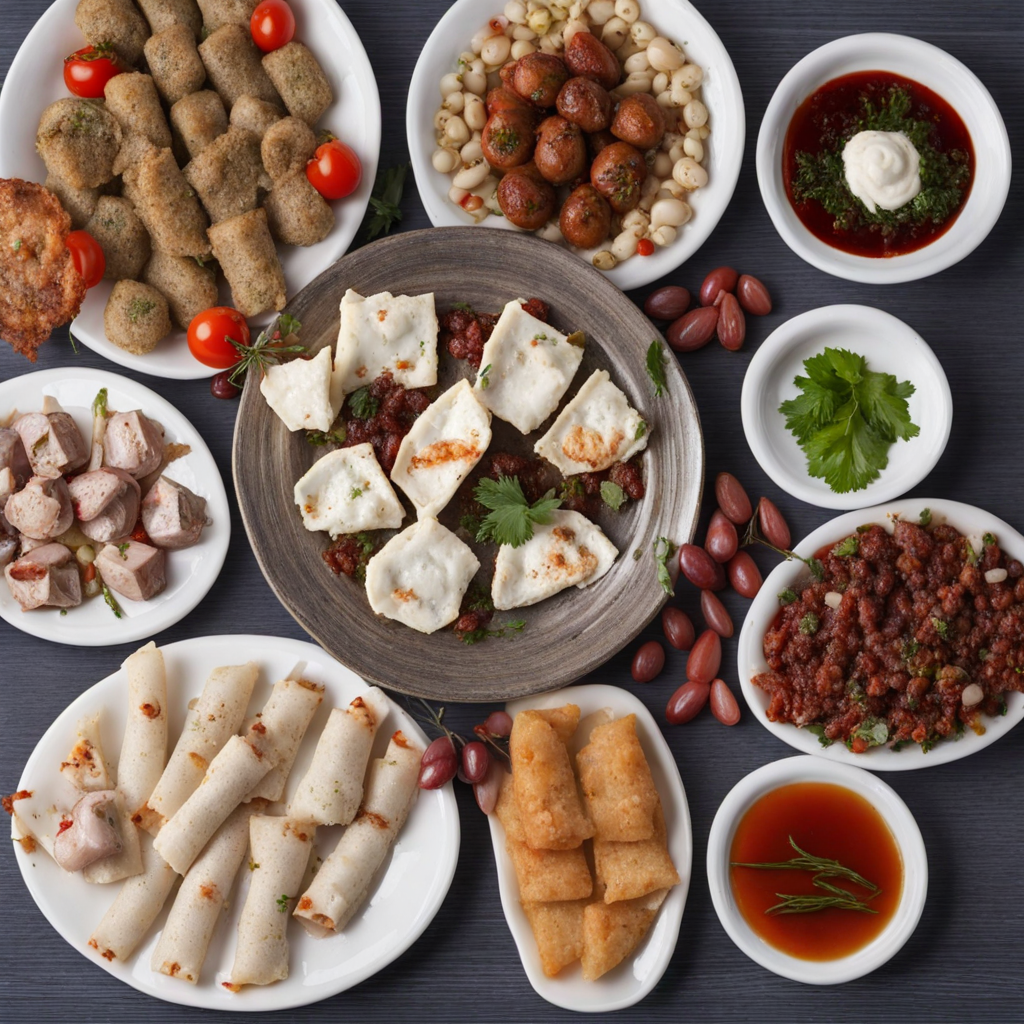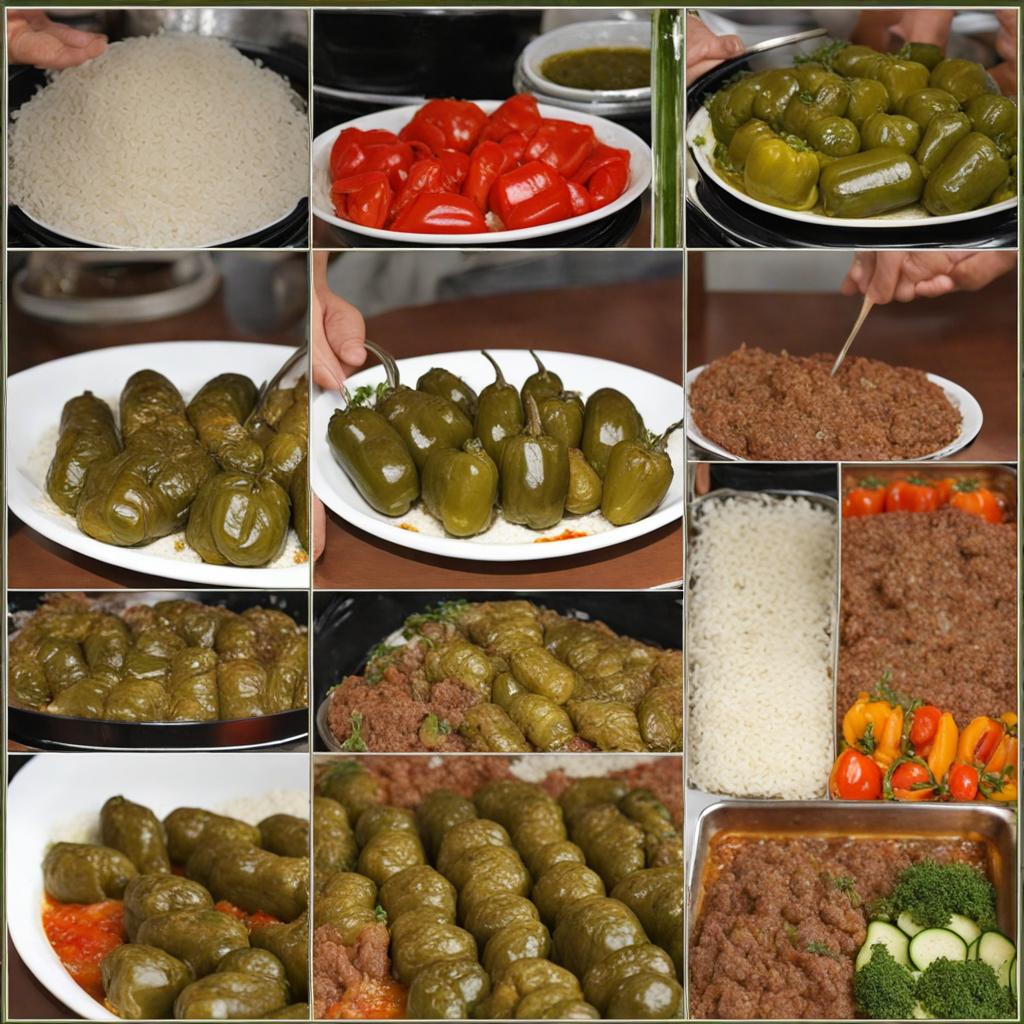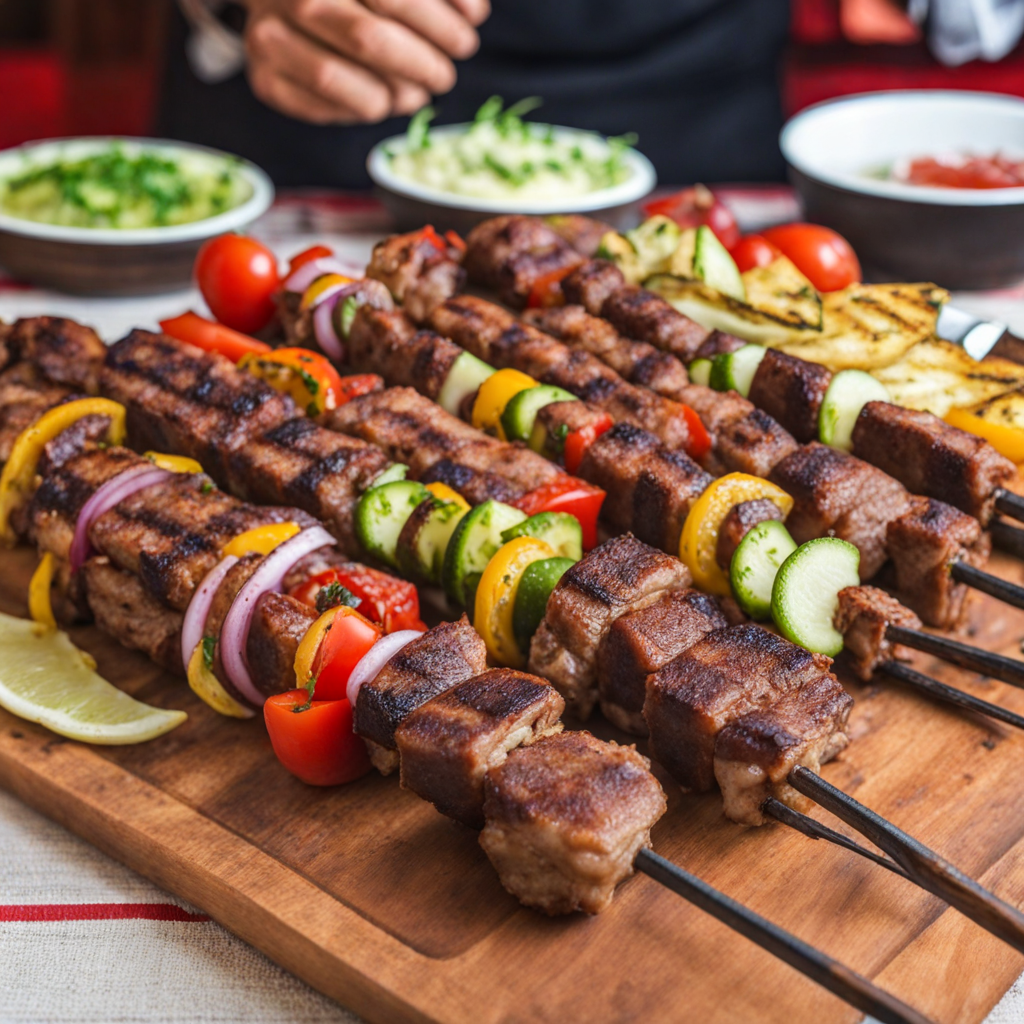Meze
Meze is a delightful array of small dishes that embodies the essence of Turkish cuisine, inviting diners to embark on a vibrant culinary journey. This tradition of serving numerous appetizers encourages sharing and socializing, making it an integral part of gatherings. Each meze dish is meticulously crafted, showcasing a variety of flavors and textures that range from creamy to crunchy and from tangy to savory. Common ingredients include fresh vegetables, herbs, olive oil, and an assortment of cheeses, seafood, and meats, ensuring that there is something to tantalize every palate. As you explore meze, you'll encounter classics like hummus, a smooth blend of chickpeas and tahini, often garnished with a drizzle of olive oil and sprinkled with paprika. Other popular choices include stuffed grape leaves (dolma), which are bursting with herbed rice and pine nuts, and the refreshing cacık, a yogurt-based dip mixed with cucumber and mint. The vibrant colors and fresh ingredients not only make meze visually appealing but also highlight the use of seasonal produce, reflecting the Turkish commitment to quality and flavor. The experience of enjoying meze is as important as the food itself. These small plates are typically served with a selection of warm, freshly baked bread and accompanied by traditional drinks like raki, an anise-flavored spirit that complements the flavors beautifully. Sharing a platter of meze fosters a communal atmosphere, allowing friends and family to savor the diverse tastes together. This culinary tradition not only satiates hunger but also cultivates bonds, making it a perfect way to immerse oneself in Turkish culture.
How It Became This Dish
The History of Meze: A Culinary Journey Through Time and Culture Origins of Meze The term "meze" (or "mezze") refers to a variety of small dishes served as appetizers alongside drinks, particularly in Turkey and many other regions of the Eastern Mediterranean and the Middle East. The word itself is derived from the Persian "mazze," meaning "taste" or "snack," which reflects the essence of what meze represents: a delightful assortment of flavors meant to tantalize the palate. The origins of meze can be traced back thousands of years to the ancient civilizations that flourished in Anatolia, the Asian part of modern Turkey. The Hittites, Phrygians, and later the Greeks and Romans contributed to a rich culinary heritage in this region. The combination of local ingredients such as olives, fresh vegetables, nuts, and dairy products, along with influences from trade routes, laid the groundwork for the meze tradition. In ancient Greece, the practice of serving small plates began to take shape, particularly in relation to wine-drinking customs. By the time the Byzantine Empire emerged, the concept of meze evolved further. The Byzantines emphasized the importance of communal dining, and meze became an integral part of their culinary repertoire, often served alongside wine or other beverages to enhance the social experience of dining. Cultural Significance of Meze Meze is not just food; it is a cultural phenomenon that embodies the values of hospitality and community in Turkish culture. Traditionally, meze is enjoyed in a social setting—whether at family gatherings, celebrations, or casual meet-ups with friends. This communal dining experience fosters conversation and connection, as guests share dishes and flavors, creating a collective culinary journey. In Turkey, the preparation and presentation of meze can be considered an art form, reflecting regional diversity and local ingredients. Each region boasts distinct specialties; for instance, the Aegean coast is famous for its herb-infused dishes, while the southeastern region showcases spicy and robust flavors. This variety underscores the cultural richness of Turkey and illustrates how geography and climate influence culinary practices. Moreover, meze plays a role in Turkish hospitality, where offering a selection of meze to guests is a way of honoring them. The act of sharing food fosters bonds, making meze a symbol of generosity and warmth. It is common to see meze served during significant occasions, such as weddings, religious holidays, and festive gatherings, underscoring its importance in Turkish social life. Meze Through Time: Evolution and Adaptation As the centuries progressed, meze continued to evolve, adapting to changing tastes and influences. The Ottoman Empire, which spanned from the late 13th century to the early 20th century, had a profound impact on the development of meze. The empire's vast territories brought together diverse culinary traditions, and the royal kitchens in Istanbul became a melting pot of flavors and techniques. This era saw the introduction of new ingredients, such as yogurt, which became a staple in many meze dishes. During the Ottoman period, meze became increasingly sophisticated, with dishes being intricately prepared and elegantly presented. The meyhane, or tavern, became a popular establishment where people gathered to enjoy meze paired with raki, the national anise-flavored spirit of Turkey. These establishments played a vital role in the social fabric of urban life, where people came together to enjoy food, drink, and companionship. The 19th century brought about further changes, particularly with the influence of Western culinary practices. As Turkey began to modernize, so did its dining customs. The introduction of new cooking techniques and ingredients led to the creation of hybrid meze dishes that combined traditional flavors with contemporary presentations. The Globalization of Meze In the late 20th and early 21st centuries, globalization played a significant role in the dissemination of meze beyond Turkey's borders. The rise of international travel and the growing interest in Mediterranean cuisine led to the popularization of meze in restaurants worldwide. Chefs began to embrace the concept, creating fusion dishes that incorporated elements of meze into various culinary traditions. The health-conscious movement also contributed to the rise of meze, as its emphasis on fresh vegetables, legumes, and healthy fats aligns with modern dietary preferences. Dishes such as hummus, baba ghanoush, and tabbouleh became staples in international cuisine, often served in casual dining settings or as part of larger Mediterranean-inspired menus. Moreover, the concept of sharing plates has gained traction in contemporary dining culture, with many restaurants adopting meze-style service. This shift caters to a desire for communal dining experiences, allowing diners to sample a variety of flavors and foster connections over shared meals. Modern Meze: A Culinary Revival Today, meze continues to thrive in Turkey and beyond, enjoying a renaissance that emphasizes both tradition and innovation. In Turkey, traditional meze dishes such as ezme (a spicy tomato and pepper salsa), dolma (stuffed grape leaves), and haydari (a yogurt dip with herbs) remain beloved staples. However, contemporary chefs are also experimenting with new ingredients and techniques, creating modern interpretations that appeal to younger generations. Meze has also become a symbol of cultural identity for the Turkish diaspora, serving as a way to connect with their heritage and share it with others. International food festivals and cooking classes often feature meze, allowing a global audience to appreciate the rich tapestry of Turkish culinary traditions. In essence, meze embodies a unique blend of history, culture, and community. Its evolution reflects the influences of time, geography, and social dynamics, while its enduring popularity speaks to the universal appeal of shared dining experiences. As meze continues to adapt and thrive in a globalized world, it remains a delicious testament to the richness of Turkish cuisine and the importance of food in fostering connections among people. Through meze, we are invited not only to taste but to experience the essence of Turkish culture—one shared plate at a time.
You may like
Discover local flavors from Turkey







